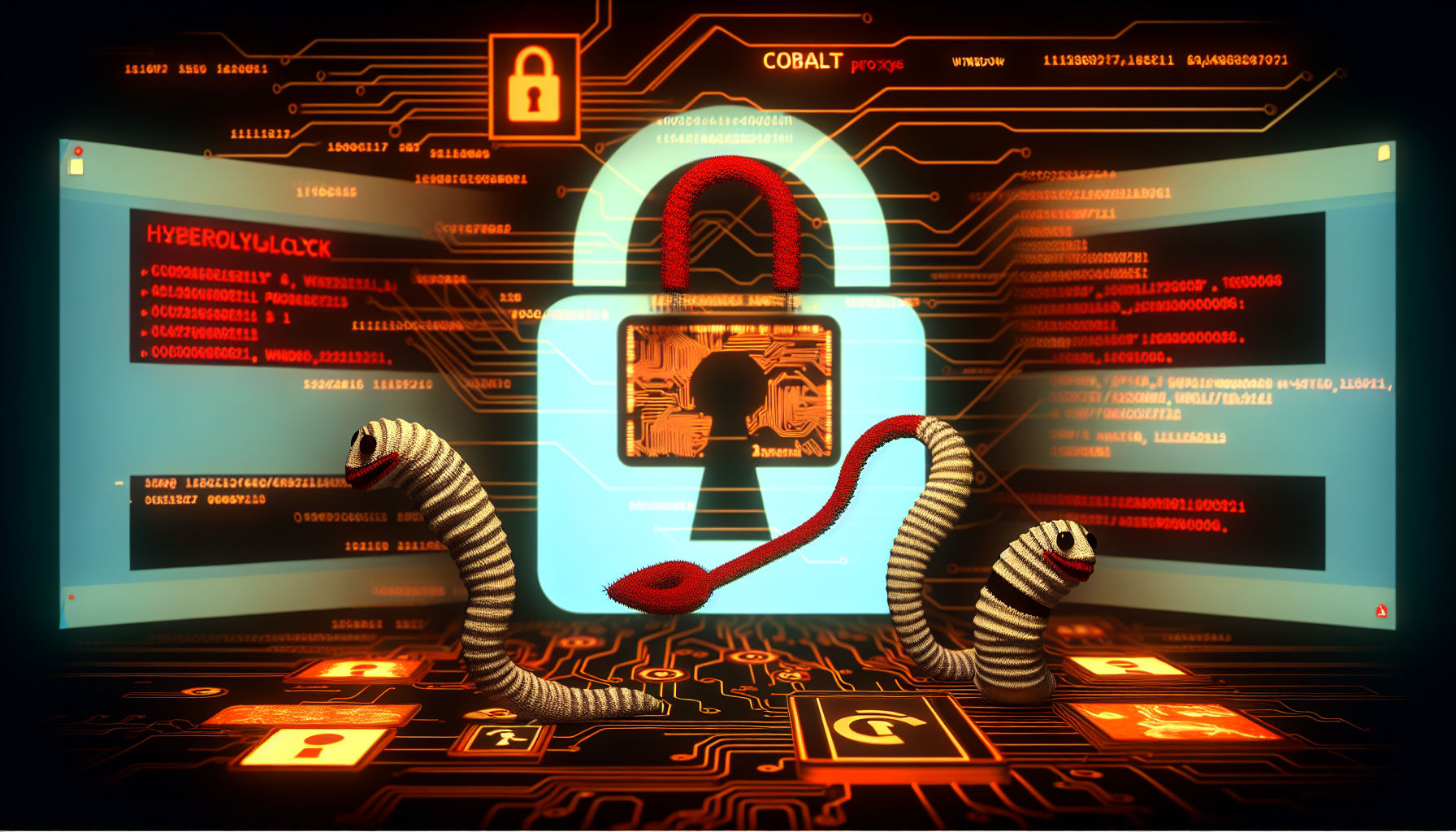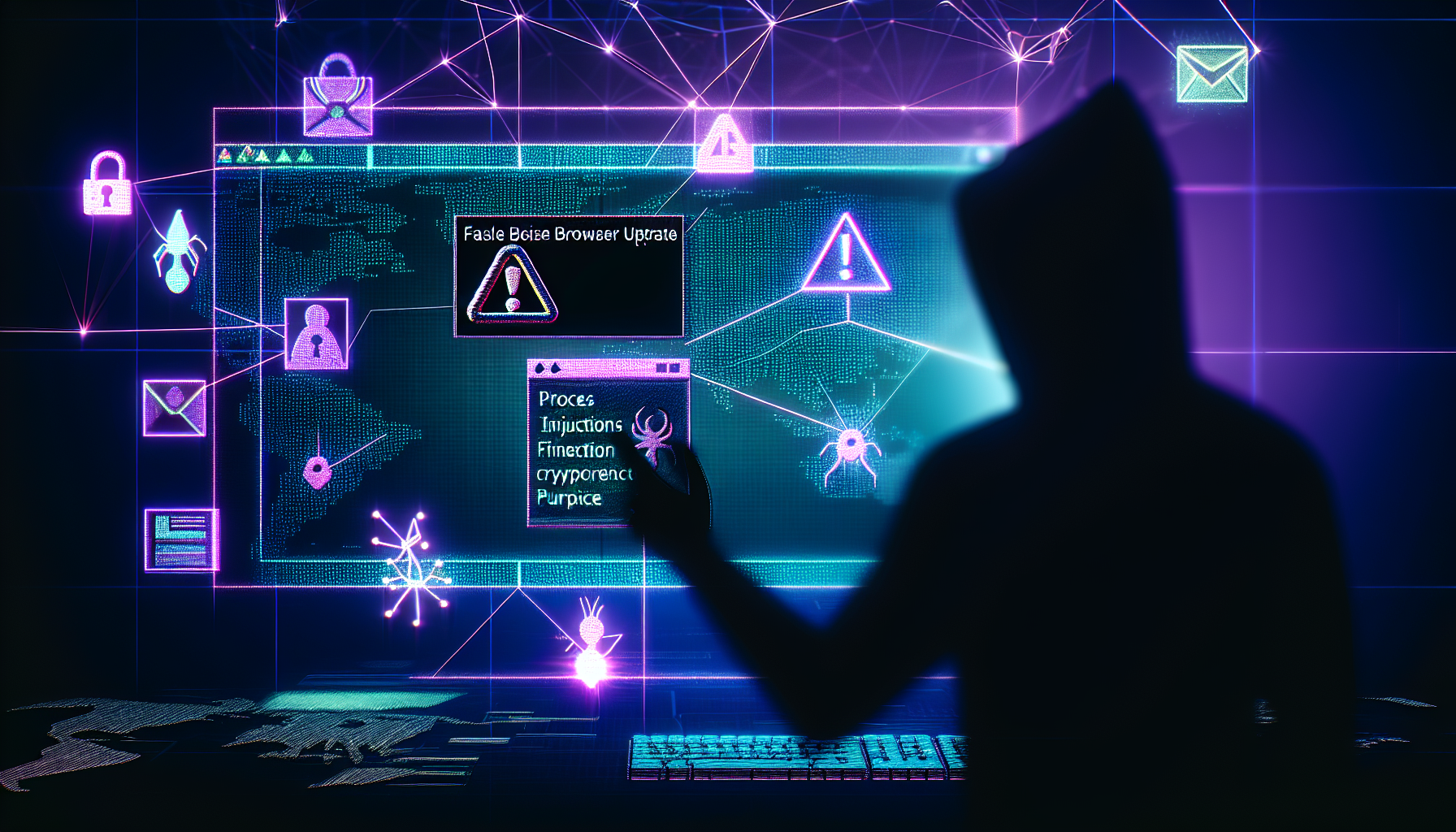Discover more from ESSGroup
Subscribe to get the latest posts sent to your email.

Threat Overview
Microsoft Security Research has released a comprehensive analysis of an intrusion into a Windows environment, leading to the deployment of LockBit ransomware on the 11th day. The campaign demonstrates a well-resourced threat actor’s ability to leverage legitimate tools for malicious purposes.
Report Summary
The “Cobalt Strike and a Pair of SOCKS Lead to LockBit Ransomware” report provides insights into the tactics, techniques, and procedures (TTPs) employed by the threat actor. Key events include:
Actor Group
While the report does not attribute the campaign to a specific group, it describes the actors as organized with considerable resources at their disposal.
External References
Details of this threat can be found at:
https://thedfirreport.com/2025/01/27/cobalt-strike-and-a-pair-of-socks-lead-to-lockbit-ransomware/
Recommendations
To mitigate such threats, organizations should:
Excerpt
This report highlights the growing threat of sophisticated campaigns leveraging legitimate tools like Cobalt Strike for malicious purposes, and the importance of vigilance in defending against these threats.
Subscribe to get the latest posts sent to your email.
Lorem Ipsum is simply dummy text of the printing and typesetting
industry. Lorem Ipsum has been the industry's

Threat Overview
The cybersecurity landscape is continually evolving, with new threats emerging at an alarming rate. One of the latest and most concerning developments is the rise of open-source ransomware, as highlighted in a recent threat report published by AlienVault on April 8, 2025. The report, titled ‘CrazyHunter: The Rising Threat of Open-Source Ransomware,’ delves into a significant ransomware attack that targeted Mackay Memorial Hospital in Taiwan. This incident underscores the growing trend of threat actors leveraging publicly available offensive tools to launch sophisticated cyber attacks.
The CrazyHunter ransomware, built using the Prince Ransomware builder sourced from GitHub, successfully encrypted over 600 devices across two hospital branches. The attack is believed to have been initiated via a USB device, demonstrating the simplicity and effectiveness of such vectors in compromising critical infrastructure. The threat actor employed a variety of tools for defense evasion, encryption, and lateral movement, making the attack particularly challenging to detect and mitigate.
One of the key tools used in this attack was a vulnerable Zemana driver, which allowed the threat actor to disable security products on the compromised systems. This tactic highlights the importance of keeping all software up-to-date and patching vulnerabilities promptly. Additionally, the Prince Ransomware builder was utilized for file encryption, showcasing how open-source tools can be repurposed for malicious activities.
Lateral movement within the network was facilitated using SharpGPOAbuse, a tool designed to exploit Group Policy Objects (GPOs) for unauthorized access and control. This method of lateral movement is particularly insidious because it leverages legitimate administrative tools, making it difficult to distinguish between normal and malicious activity.
The incident at Mackay Memorial Hospital serves as a stark reminder of the increasing accessibility of cyber attack tools. Even less skilled actors can now launch sophisticated attacks by utilizing publicly available resources. This trend poses significant challenges for attribution and defense against ransomware threats, as the use of open-source tools makes it harder to trace the origin of an attack.
Recommendations
In light of these developments, organizations must adopt a proactive approach to cybersecurity. Here are some recommendations to mitigate the risks associated with open-source ransomware:
Monitor for Anomalous Activity: Deploy advanced monitoring tools to detect unusual behavior within the network. This includes monitoring for unauthorized access attempts, suspicious file modifications, and lateral movement activities.
Educate Employees: Conduct regular training sessions to educate employees about the risks associated with cyber threats and best practices for maintaining security. This includes recognizing phishing attempts and avoiding the use of untrusted USB devices.
Backup Critical Data: Regularly back up critical data and ensure that backups are stored securely offsite. This ensures that data can be restored in the event of a ransomware attack without paying the ransom.
Use Multi-Factor Authentication (MFA): Implement MFA for all access points to critical systems. This adds an extra layer of security, making it more difficult for threat actors to gain unauthorized access.
Conduct Regular Security Audits: Perform regular security audits and penetration testing to identify and address potential vulnerabilities in the network. This helps in proactively mitigating risks before they can be exploited by threat actors.
Collaborate with Cybersecurity Experts: Partner with cybersecurity firms and participate in information-sharing communities to stay informed about the latest threats and best practices for defense.
Conclusion
The CrazyHunter ransomware attack on Mackay Memorial Hospital is a wake-up call for organizations worldwide. The increasing accessibility of open-source offensive tools means that even less skilled actors can launch sophisticated attacks. By adopting a proactive approach to cybersecurity, implementing strong access controls, monitoring for anomalous activity, and educating employees, organizations can significantly reduce their risk of falling victim to such threats.
For more detailed information on the CrazyHunter ransomware and recommendations for mitigation, please refer to the external references provided in the report:
Stay vigilant and proactive in your cybersecurity efforts to protect against the evolving threat landscape.

In the ever-evolving landscape of cyber threats, staying informed about the latest malware and attack vectors is crucial for maintaining robust security measures. A recent threat report published by AlienVault on February 17, 2025, sheds light on a sophisticated malware infection chain involving SocGholish, MintsLoader, and the GhostWeaver backdoor. This article delves into the details of this complex attack, its implications, and provides recommendations for mitigating such threats.
The attack begins with a deceptive tactic: a fake browser update. Users are tricked into downloading what they believe is a legitimate software update, but in reality, it’s the first stage of a multi-step infection process. This initial payload sets the stage for the deployment of MintsLoader, which acts as a loader for additional malicious components.
One of the key players in this attack chain is the GhostWeaver backdoor. Once deployed, GhostWeaver utilizes advanced techniques such as process injection and JA3 fingerprint manipulation to evade detection. Process injection allows the malware to insert its code into legitimate processes, making it harder for security tools to identify and block. JA3 fingerprint manipulation involves altering the SSL/TLS client hello message to avoid being flagged by network monitoring systems.
The malware’s ultimate goal is to steal sensitive information. This includes browser credentials, cryptocurrency wallet data, and contents from Outlook emails. The attackers are particularly interested in non-AD-joined machines, which suggests a focus on smaller organizations or individual users with weaker security measures. These targets are often less likely to have robust security protocols in place, making them easier prey for cybercriminals.
The attack chain involves several stages, each designed to enhance the malware’s stealth and effectiveness. After the initial fake browser update, MintsLoader is deployed to download and execute additional payloads. One of these payloads is a PowerShell backdoor, which provides the attackers with remote access to the compromised system. This backdoor can then be used to deploy various plugins that further enhance the malware’s capabilities.
One of the most concerning aspects of this attack is its use of web injection techniques. Web injection allows the malware to intercept and manipulate data as it flows between the user’s browser and the targeted website. This can include injecting malicious scripts, stealing form data, or even altering the content displayed on the webpage. The result is a highly effective method for exfiltrating sensitive information without raising suspicion.
To protect against such sophisticated threats, organizations and individuals must implement comprehensive security measures. Here are some recommendations:
Network Monitoring: Implement robust network monitoring tools that can identify unusual activity, such as process injection or JA3 fingerprint manipulation. This includes using intrusion detection systems (IDS) and intrusion prevention systems (IPS).
Regular Updates: Ensure that all software, including browsers and operating systems, is kept up-to-date with the latest security patches.
Multi-Factor Authentication (MFA): Enforce MFA for accessing sensitive data and systems. This adds an extra layer of security, making it harder for attackers to gain unauthorized access.
Backup and Recovery: Regularly back up important data and have a recovery plan in place. In the event of a successful attack, this can help minimize downtime and data loss.
Incident Response Plan: Develop and regularly update an incident response plan. This should include steps for detecting, responding to, and recovering from cyber attacks.
The threat posed by the SocGholish, MintsLoader, and GhostWeaver backdoor attack chain highlights the need for vigilance and proactive security measures. By understanding the tactics used by attackers and implementing robust defenses, organizations can better protect themselves against these sophisticated threats. For more detailed information on this report, please visit the external references provided.
References:
1. https://trac-labs.com/dont-ghost-the-socgholish-ghostweaver-backdoor-574154dd9983
2. https://otx.alienvault.com/pulse/67b31942143b95827551dee8
Please check the following page for additional information: https://trac-labs.com/dont-ghost-the-socgholish-ghostweaver-backdoor-574154dd9983

Threat Report: Stealers on the Rise
Published: Feb 4, 2025
Short Description:
This report examines the increasing prevalence of macOS infostealers, focusing on three prominent threats: Atomic Stealer, Poseidon Stealer, and Cthulhu Stealer. These malware variants target sensitive information such as financial details, credentials, and intellectual property.
Distribution Methods:
– Malicious apps disguised as legitimate software (e.g., cracks for paid applications)
– Phishing emails with malicious attachments or links
– Exploit kits and malvertising
Execution Processes:
– Atomic Stealer: Uses launch agents to persistently run the malware upon login.
– Poseidon Stealer: Utilizes a legitimate software’s signature to bypass Gatekeeper restrictions.
– Cthulhu Stealer: Employs a custom launcher that uses task scheduling API for persistence.
Data Exfiltration Techniques:
– Data is sent via HTTP(S) to command and control (C2) servers managed by threat actors.
– Some stealers also exfiltrate data stored in the Keychain, browsers, and other sensitive locations.
Threat Trends:
– There was a 101% increase in macOS infostealer detections between the last two quarters of 2024.
Recommendations:
External References:

Subscribe now to keep reading and get access to the full archive.